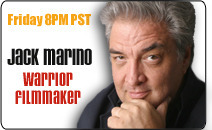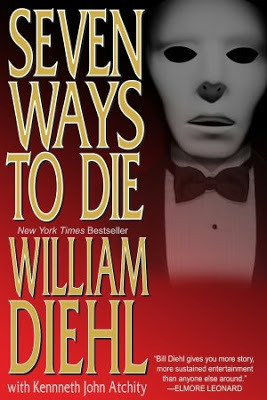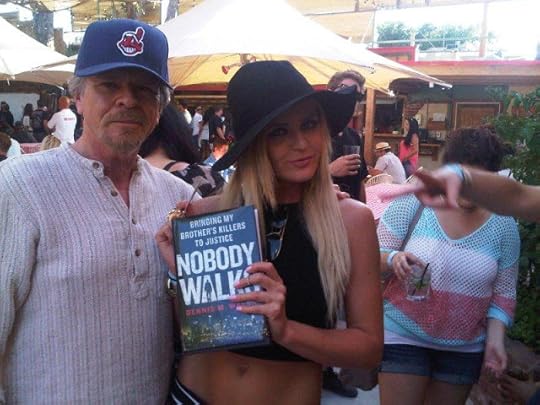Kenneth Atchity's Blog, page 208
June 19, 2013
TODAY: Download Writing Treatments to Sell FREE from amazon.com
As part of this interview, the Story Merchant is announcing a
giveaway: For twenty-four hours starting with this MA post you can download Writing Treatments to Sell FREE from
amazon.com
Writing Treatments to Sell - Kenneth Atchity
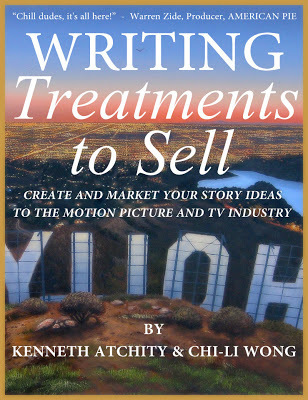
Writing treatments that
sell is a first book of its kind devoted entirely to the function of treatments
in film and TV and how to write and present effective ones. The book is a
collaboration by Kenneth Atchity and Chi-Li Wong, partners in Atchity
Entertainment International, Inc.
Kenneth and Chi – MA
is sincerely honored by your willingness to share your knowledge and adventure
relating to this new book. So without any further ado here are all our
questions.
What
made you initiate the idea of providing a guide like Writing Treatments to Sell?
The
most frequent question we were getting from clients—novelists as well as
itinerant screenwriters was “what is a treatment?” We realized that book
answering this question would be helpful.
Who
was your target audience?
The book’s target audience is anyone who
wants to write or sell a story to the motion picture or television world.
Who
ended up putting pen to paper?
We
have a process where we outline the content together, Chi-Li takes a shot at
the first draft, then Kenneth does the next, etc.
Is
the book specifically targeted for the film industry only?
Although we targeted the book to
the film industry, in the years since it was first published we've learned that
its useful to writers of all kinds—children’s books, novels, etc.—because it
helps them to “get the story straight” before launching into the actual
drafting.
Why
a book based specifically on treatments?
Because a treatment is a
unique creature that will never itself see publication or production, and
therefore everyone wonders why it even exists.
What
is a “treatment?”
To quote directly from the book: “A treatment is a relatively brief,
loosely narrative written pitch of a story intended for production as a film
for theatrical exhibition or television broadcast. Written in user-friendly,
dramatic, but straightforward and highly visual prose, in the present tense,
the treatment highlights in broad strokes your story’s hook, primary characters,
acts and action line, setting, point of view, and most dramatic scenes and
turning points.” The book goes into detail about the meaning of each phrase in
this definition, distinguishing the treatment from “coverage,” “synopsis,”
“outlines,” among others.
The
Story Merchant itself is all about content, branding and consultation in the
entertainment and media arena. How does this book tie into the bigger plan of
Story Merchant?
This book, like Atchity’s How to Publish Your Novel or Write Time: A Guide to the Creative
Process, from Vision through Revision is
a tool by which the Story Merchant shares experience in the commercial world of
stories with aspiring storytellers.
Does
reading the book create a sense of more business for Story Merchant or is it
more directed towards internal growth for each and every writer / screen
writer?
We can’t spend time with every storyteller out there who needs
guidance, so we wrote this book to help
anyone who’s motivated enough to buy it—now available in ebook for the first
time. But that’s not to say Story Merchant has found coaching clients through
this and Atchity’s other books.
Being
an aspiring author myself, I find that optimism and endurance are two of the
main things to hold onto while craving for acknowledgement towards your own
work, what is your advice towards fellow aspirers who look up to yourselves for
hope?
We’ve learned that hope is great, but determination is even better,
when it comes to success. Just keep working on your career, whether you’re in a
good mood or not, whether you’re hopeful or not. Work is the only sure road to
success.
On
your website – The Story Merchant – you have your section related to
writing Treatments that sell categorized under the following subtitles:
Reviews
of Writing Treatments To Sell.
Why
a book on treatment.
What
is a treatment?
Writing
treatments that sell excerpt.
About
A Writer’s Time.
Reviews
of The Classical Greek Reader
Reviews
of The Mercury Transition.
Reviews
of The Classical Roman Reader.
Reviews
of The Renaissance Reader.
Reviews
of Cajun Household Wisdom
While
the first 4 topics are clearly related to the obvious could you explain the
collaboration on the balance? What defines these topics?
Simply that they’re all books
from Kenneth Atchity.
In general how has publishing and moving into the entertainment industry
changed for writers. I mean – I myself sometimes wish that I had started
writing ten years earlier as it seems as if the market might have been less
chaotic. In today’s time it’s as if everyone can put pen to paper and call
themselves an author. How do you define the word author, writer?
A
writer is someone who WRITES, and who cares enough about her writing to find an
audience for it. While everything else has changed, that definition has not
changed and will not change.
Last but not least, what else can people look forward to? Being in the industry
you are it is important to recreate your image and stay in the zone with
current trends, how do you intend on moving forward while carrying the weight
of years and years’ experience in the existing field? How do you mould yourself
to be eye catching and present in the future?
More books are in the works, focused on
marketing your writing and on selling your writing, as well as a just-completed
book of quotes for writers. We move forward by changing because we respond to a changing world.
As always, thanks a lot for your presence and willingness to
Share.
Thanks for providing this
wonderful forum.
Kenneth Atchity
is known as the Story Merchant. Why has he been defined accordingly?
Posted by
Nadine Maritz

giveaway: For twenty-four hours starting with this MA post you can download Writing Treatments to Sell FREE from
amazon.com
Writing Treatments to Sell - Kenneth Atchity

Writing treatments that
sell is a first book of its kind devoted entirely to the function of treatments
in film and TV and how to write and present effective ones. The book is a
collaboration by Kenneth Atchity and Chi-Li Wong, partners in Atchity
Entertainment International, Inc.
Kenneth and Chi – MA
is sincerely honored by your willingness to share your knowledge and adventure
relating to this new book. So without any further ado here are all our
questions.
What
made you initiate the idea of providing a guide like Writing Treatments to Sell?
The
most frequent question we were getting from clients—novelists as well as
itinerant screenwriters was “what is a treatment?” We realized that book
answering this question would be helpful.
Who
was your target audience?
The book’s target audience is anyone who
wants to write or sell a story to the motion picture or television world.
Who
ended up putting pen to paper?
We
have a process where we outline the content together, Chi-Li takes a shot at
the first draft, then Kenneth does the next, etc.
Is
the book specifically targeted for the film industry only?
Although we targeted the book to
the film industry, in the years since it was first published we've learned that
its useful to writers of all kinds—children’s books, novels, etc.—because it
helps them to “get the story straight” before launching into the actual
drafting.
Why
a book based specifically on treatments?
Because a treatment is a
unique creature that will never itself see publication or production, and
therefore everyone wonders why it even exists.
What
is a “treatment?”
To quote directly from the book: “A treatment is a relatively brief,
loosely narrative written pitch of a story intended for production as a film
for theatrical exhibition or television broadcast. Written in user-friendly,
dramatic, but straightforward and highly visual prose, in the present tense,
the treatment highlights in broad strokes your story’s hook, primary characters,
acts and action line, setting, point of view, and most dramatic scenes and
turning points.” The book goes into detail about the meaning of each phrase in
this definition, distinguishing the treatment from “coverage,” “synopsis,”
“outlines,” among others.
The
Story Merchant itself is all about content, branding and consultation in the
entertainment and media arena. How does this book tie into the bigger plan of
Story Merchant?
This book, like Atchity’s How to Publish Your Novel or Write Time: A Guide to the Creative
Process, from Vision through Revision is
a tool by which the Story Merchant shares experience in the commercial world of
stories with aspiring storytellers.
Does
reading the book create a sense of more business for Story Merchant or is it
more directed towards internal growth for each and every writer / screen
writer?
We can’t spend time with every storyteller out there who needs
guidance, so we wrote this book to help
anyone who’s motivated enough to buy it—now available in ebook for the first
time. But that’s not to say Story Merchant has found coaching clients through
this and Atchity’s other books.
Being
an aspiring author myself, I find that optimism and endurance are two of the
main things to hold onto while craving for acknowledgement towards your own
work, what is your advice towards fellow aspirers who look up to yourselves for
hope?
We’ve learned that hope is great, but determination is even better,
when it comes to success. Just keep working on your career, whether you’re in a
good mood or not, whether you’re hopeful or not. Work is the only sure road to
success.
On
your website – The Story Merchant – you have your section related to
writing Treatments that sell categorized under the following subtitles:
Reviews
of Writing Treatments To Sell.
Why
a book on treatment.
What
is a treatment?
Writing
treatments that sell excerpt.
About
A Writer’s Time.
Reviews
of The Classical Greek Reader
Reviews
of The Mercury Transition.
Reviews
of The Classical Roman Reader.
Reviews
of The Renaissance Reader.
Reviews
of Cajun Household Wisdom
While
the first 4 topics are clearly related to the obvious could you explain the
collaboration on the balance? What defines these topics?
Simply that they’re all books
from Kenneth Atchity.
In general how has publishing and moving into the entertainment industry
changed for writers. I mean – I myself sometimes wish that I had started
writing ten years earlier as it seems as if the market might have been less
chaotic. In today’s time it’s as if everyone can put pen to paper and call
themselves an author. How do you define the word author, writer?
A
writer is someone who WRITES, and who cares enough about her writing to find an
audience for it. While everything else has changed, that definition has not
changed and will not change.
Last but not least, what else can people look forward to? Being in the industry
you are it is important to recreate your image and stay in the zone with
current trends, how do you intend on moving forward while carrying the weight
of years and years’ experience in the existing field? How do you mould yourself
to be eye catching and present in the future?
More books are in the works, focused on
marketing your writing and on selling your writing, as well as a just-completed
book of quotes for writers. We move forward by changing because we respond to a changing world.
As always, thanks a lot for your presence and willingness to
Share.
Thanks for providing this
wonderful forum.
Kenneth Atchity
is known as the Story Merchant. Why has he been defined accordingly?
Posted by
Nadine Maritz

Published on June 19, 2013 11:43
The Academy of Cybertoria Reviews The Messiah Matrix
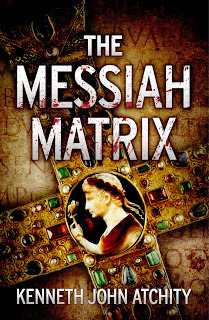
The Messiah Matrix by Kenneth John Atchity
The newly published fiction novel, The Messiah Matrix by Kenneth John Atchity is a unique hybrid of a detective story, history, and religious fantasy tale in one story. Atchity serves up a large dose of religious conspiracy theory to satisfy the discriminating tastes of even the most paranoid, staunch atheist reader.
The author goes into extensive detail describing a fictitious, yet well woven quasi-historical theory of the origins of the Roman Catholic Church and Jesus. In fact, the same readers that actually believed Dan Brown's intricate tales of church intrigue and conspiracy theories in the fictional novel, The Davinci Code, may be the very same gullible readers who may believe that Atchity's tale is in fact true. Because of its realism, I would advise impressionable individuals to pass this novel up as they may be easily led to believe it is true. Yet, this imaginative tale far exceeds the talents of the popular Dan Brown novel with its insertion of authentic historical details and the unique, and unexpected climactic end. I was quite surprised at the imagination of Atchity. This fictional work can almost be deemed a clever attempt to re-write ancient history and undermine the authenticity of the biblical gospel and new testament. At minimum this book calls into question the authority and the credibility of the Christian church, and more specifically, the Roman Catholic Church. The inclusion of authentic and relevant details intertwined with fictional details, make this a clever piece of deception and this work may leave the uneducated reader who is less grounded in history, second guessing what he thinks he knows about ancient history and religion. Nominally religious readers may find they lose their faith altogether. The insertion of a look a like "Imprimature" on the book's spine may mislead some Catholic readers into thinking this is a religious book sanctioned by the church. I am fairly certain the bait and switch attempt to draw in the religious audience is not the author's intent. The ancient Catholic symbol of the Chi-Ro within the text, Latin phrases and the illustrations of actual ancient Roman coinage as well as fictionalized false coinage all serve to complete an aura of authenticity in selling this alternate "historical" reality to the reader.
History as well as archeology enthusiasts will enjoy the vivid depictions of the sites, fictionalized ancient accounts, historical figures and archeological references in the various historical time periods and various ancient cultures. Josephus, the Roman emperors, Constantine, Herod as well as other ancient personalities are referenced. The non religious historical details, ancient philosophies and beliefs are educational as well as entertaining. This book presents a very interesting scenario of an alternate historical reality involving commonly known events in ancient classical history- namely Jesus, the ancient church and ancient Rome. The history student will find this book entertaining as an intriguing "what if" type of historical scenario. In light of all those apocryphal gospels such as the gospel of Thomas and the false works that allegedly claim to bring to light the infancy and so called "lost" years of Jesus, this book adds to the plethora of confusion, mystery and subterfuge surrounding the bible and church history. It even has its own gospel according to Augustus.
I feel that the author's biases against organized religion- specifically the Catholic church is obvious in the writing details. For example, any reference to a Catholic sacrament included additional opinion as to its efficacy. For example as early as page 11, the author's opinion is introduced when he calls into questions the last rights offered by the priest in the statement that the absolution "may or may not have opened" the eternal gates. In otherwords, Atchity second guesses the effectiveness of the sacraments. Some religious Catholic readers who catch these subtle insults to their faith might take offense. The appendix or chart in the back of the book boldly equates biblical history as "Mythical" history. Actual historical events are set side by side with biblical events that he calls myth. Parallels and connections are made between the divine claims of Jesus with the Roman Caesar. Biblical concepts and spiritual phrases such as the "Keys to the Kingdom", "den of thieves", "loaves and fishes", "hell", "He is risen" and "Son of God" are reinterpreted with new meaning. Literal and practical interpretations replace the biblical, faith based meanings. The implication is that the gospels have been misread and misinterpreted, and there is another non spiritual explanation and that the Catholic church has been responsible for a cover-up fooling even sincere clergy as well as the faithful laymen. Nevertheless, the author is a talented writer, who puts together an intelligently written, researched work of fiction that will be sure to engage even the most educated reader. The extent of factual historical information might lose some modern day readers. Yet I feel the detailed historical elements adds to its value and richness as it transports the reader to ancient Rome. It is not surprising to learn that Atchity is a college professor. To give details as to the actual storyline and the historical scenario presented, would surely spoil the book's surprise for those who wish to read it. Therefore I find I have to cut this review short. It is sufficient to say that the author provides an alternate, non religious, yet interestingly literal interpretation of some faith based elements of biblical history. I can imagine the author bursting with excitement in anticipation as to the reactions of surprise that readers, as well as his professional colleagues - will certainly have when they get to the end of the story.

Published on June 19, 2013 00:00
June 18, 2013
Jack Marino, LA Talk Radio Interviews Dennis Walsh about Nobody Walks
Published on June 18, 2013 00:00
June 17, 2013
Examiner.com Five Star Book review: Dr. Fuddle and the Gold Baton by Warren L. Woodruff
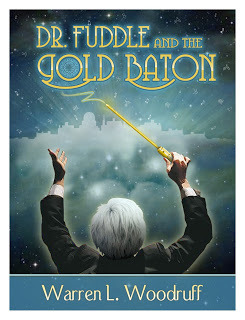
Dr. Fuddle and the Gold Baton by Warren L. Woodruff is an unique musical fantasy children's novel. The book follows the adventure of five kids getting back the Gold Baton and saving the mythical land of Orphea. Each of the kids have a unique personality and the plot features them each having strengths and weaknesses and highlights them working together to succeed.
The classical music nature of the novel may make this a boring read for some, but for those interested in music and/or learning more about music this is an interesting read. Throughout the book there are references to musical terms and in Orphea music is basically magical and can do all sorts of things. The inclusion of historical figures involved in making, playing, and supporting music also makes it a good read for those interested in music history.
While the descriptions of the music can sometimes slow the plot down too much, overall the flow of Dr. Fuddle and the Gold Baton is steady with great peaks for the final battle and ending. The main strength of the book is the unique personalities of the kids making it easy for many different people to relate to at least one of the main characters. For example, there is a scientific skeptical boy, a fashion conscious girl, a boy overcoming fears, a boy tempted by the cool kids/wrong crowd, and a mute girl.

Published on June 17, 2013 00:00
June 16, 2013
Luxury Reading's Five Star Review of The Messiah Matrix
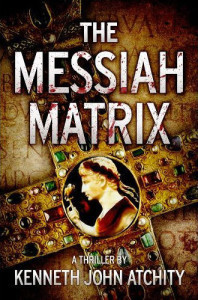 Review: The Messiah Matrix by Kenneth John Atchity
Review: The Messiah Matrix by Kenneth John AtchityReviewed by MaryLu McFall
If it weren’t for the continuing interest in the wickedness of the
Catholic Church and the on-going variety of plots imagined, we would be
forced to find another perpetual villain. Fortunately for those of us
who enjoy a good thriller with romance thrown in, the never-ending
variety of writers’ imaginations keeps giving us new ones.
The Messiah Matrix has a plot with all the ingredients to keep us turning pages.
A lovely archaeologist with two assistants finds a treasure in the
harbor by the ancient port of Caesarea. It is a rare gold coin. Emily
Scelba is convinced the coin is authentic, but calls upon a former lover
(probably never a really good idea to trust one of them) for help in
proving her find authentic. In a somewhat obvious move, he disappears
when the value of the coin is deemed to be priceless.
Then we have Father Ryan McKeown, S.J., the tousled brown-haired
priest (a Jesuit—in a bit of rather timely choice), who is in his
cassock and life of celibacy somewhat reluctantly. He is drawn into a
rapidly escalating plot of murder, Vatican politics, and danger. When he
meets Emily after the one man they both knew turns up dead, the road to
a solution to the many problems presented becomes rocky indeed. Make no mistake about this book; it’s a well-written thriller with a deep secret which would shock the world. Although at this point in history, nothing the Vatican or the Catholic Church does shocks all that much.
This secret has been kept for hundreds of years; the Jesuits (known
as the scholars, educators, and sometime rebels of the church) are
hell-bent to keep the secret until such time….well, such time that it
would be convenient for a power grab.
Emily and Ryan try to stay one step ahead of the bad guys. It’s hard
to tell who that is and it seems to depend on the mood of the day. Ryan
struggles with his crisis of faith and his attraction to Emily. She
moans to herself that the sexiest man she has met in years is a man who
has sworn his life to his order and to a life of celibacy. Thankfully,
the author does not descend to prurient tastes and manages to escalate
the sexual tension without resorting to anything other than the sins of
thought and withheld desire. Although the two are trapped once (more
than once) and do end up in each other’s arms exchanging a smoldering
kiss. Much to their individual dismay.
The author has an impressive background as a scholar. It is obvious
in the history that is part and parcel of this story. Augustus Caesar,
Pontius Pilate, Roman history of the time of Jesus, and Jesus himself
are brought together. But that is the part of the novel that may cause
many readers to pause. The parallels between the life of Augustus and
Jesus are clearly intended to shock and surprise. The Roman Emperor had
himself declared a god, his birth a miracle of conception, and
supposedly pulled off miracles of his own.
The introduction of historical facts is covered rather slickly by
having Emily tell the skeptic Father Ryan all the “facts” in the form of
stories. Emily herself went to a school taught by Jesuits, but has long
since left the church. She has a great deal of historical knowledge
which continues to shock Ryan. The plot proceeds at a good pace right
down to the last chapters. The ending struck me as contrived, and the
stretch when the secret is revealed is almost too unbelievable to
consider. But that’s from one who also left the church. Those first
eight grades in Parochial Catholic School leave an indelible mark.
Rating:





MaryLu McFall is the author of A Little Karmic Murder, an eBook
that is available on Kindle, Nook, and all other electronic readers. She
lives, works part-time at an independent bookstore, and will soon have
her Young Adult novel, The Family Lancaster, published as an eBook as
well.

Published on June 16, 2013 00:00
June 15, 2013
Check Out HOLLYWOOD HUCKSTER by David Garber It’s the Hollywood celebrity tell-all that picks up where all the other tell-all’s end!
David Garber's outrageous tell-all “HOLLYWOOD HUCKSTER” is the true story of the television and film industry from the mid ‘70s through the mid ‘80s. The pot-smoking, acid-dropping, counter-culture students of the turbulent ’60s were bringing their skewed comedy, irreverent attitudes and anti-establishment views to America via Hollywood. The lunatics started running the asylum.


David names names and reveals Huckster’s Hollywood exploits ... like ...
getting caught peeing on an Oscar winning Best Actress’s house; then becoming her close friend;
persuading MGM to pull The Wizard of Oz from CBS unless the network caved to his negotiation demands;
commandeering a t-38 fighter jet for a joy ride;
convincing Senator Ted Kennedy to give up the rights to his brother, JFK’s, personal letters.
outwitting Bill Cosby for the use of the Hilton yacht;
hosting Aaron Spelling, Robert Wagner and all three Charlie’s Angels in his jail cell;
conning the U.S. Secretary of State to pressure Warner Brothers to pick up his $5,000 bar tab;
having a gun pulled on him by “Sanford and Son” star, Demond Wilson;
eluding a “hit” put on him by the L.A. mob



David names names and reveals Huckster’s Hollywood exploits ... like ...
getting caught peeing on an Oscar winning Best Actress’s house; then becoming her close friend;
persuading MGM to pull The Wizard of Oz from CBS unless the network caved to his negotiation demands;
commandeering a t-38 fighter jet for a joy ride;
convincing Senator Ted Kennedy to give up the rights to his brother, JFK’s, personal letters.
outwitting Bill Cosby for the use of the Hilton yacht;
hosting Aaron Spelling, Robert Wagner and all three Charlie’s Angels in his jail cell;
conning the U.S. Secretary of State to pressure Warner Brothers to pick up his $5,000 bar tab;
having a gun pulled on him by “Sanford and Son” star, Demond Wilson;
eluding a “hit” put on him by the L.A. mob

Published on June 15, 2013 00:00
June 14, 2013
Tome Tender Gives Jay Atleson's Platinum Blackmail Five Stars!
Platinum Blackmail by Jay Atleson
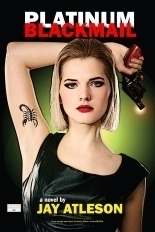
Platinum Blackmail
by Jay Atleson
My rating: 5 of 5 stars
Ever read a book that had you gripping your seat, clutching at your throat or screaming, "No! No! Don't do it!"????? Platinum Blackmail
by Jay Atleson will have yo doing ALL of the above as you travel the
twisted tale of Mark Sterling, hot shot computer software salesman and
top model, yep, he's hot! Shortly after Mark is assigned to BETA-test a
sentient email system code name SAM,he starts receiving strange emails
and messages that become threatening, while demanding a million dollars
in a blackmail attempt that could ruin him. Never short on beautiful
women, when Lisa Lancaster is assigned by her national marketing firm to
work with Mark and his boss Dallas Milligan to publicize and promote
SAM to the buying public, Mark is mysteriously enamored of her,
forgetting all others. She seems to have cast a spell over him and
seems willing to help him figure how to best the blackmailer, but, whose
side is she really on? What connection does Lisa really have to SAM?
For such a smart guy, Mark is running blind into the unknown, at best,
his ruination, at worst, his death.
Jay Atleson had me from page one! His writing is like a race car flying
through the "S" turns of his twisted tale at breakneck speed! Do NOT
expect to be able to put Platinum Blackmail down until you reach
the very last page, gasping for breath! As soon as my heart rate slows
down, I want to thank the author for the opportunity to read and review
this intriguing book!
Platinum Blackmail by Jay Atleson
ASIN: B00984N5CE
Publisher: Story Merchant Books
Date of publish: September 2012
Pages: 232
S.R.P.: $2.99 (Kindle version)
Rating: 5 Stars

Platinum Blackmail
by Jay Atleson
My rating: 5 of 5 stars
Ever read a book that had you gripping your seat, clutching at your throat or screaming, "No! No! Don't do it!"????? Platinum Blackmail
by Jay Atleson will have yo doing ALL of the above as you travel the
twisted tale of Mark Sterling, hot shot computer software salesman and
top model, yep, he's hot! Shortly after Mark is assigned to BETA-test a
sentient email system code name SAM,he starts receiving strange emails
and messages that become threatening, while demanding a million dollars
in a blackmail attempt that could ruin him. Never short on beautiful
women, when Lisa Lancaster is assigned by her national marketing firm to
work with Mark and his boss Dallas Milligan to publicize and promote
SAM to the buying public, Mark is mysteriously enamored of her,
forgetting all others. She seems to have cast a spell over him and
seems willing to help him figure how to best the blackmailer, but, whose
side is she really on? What connection does Lisa really have to SAM?
For such a smart guy, Mark is running blind into the unknown, at best,
his ruination, at worst, his death.
Jay Atleson had me from page one! His writing is like a race car flying
through the "S" turns of his twisted tale at breakneck speed! Do NOT
expect to be able to put Platinum Blackmail down until you reach
the very last page, gasping for breath! As soon as my heart rate slows
down, I want to thank the author for the opportunity to read and review
this intriguing book!
Platinum Blackmail by Jay Atleson
ASIN: B00984N5CE
Publisher: Story Merchant Books
Date of publish: September 2012
Pages: 232
S.R.P.: $2.99 (Kindle version)
Rating: 5 Stars

Published on June 14, 2013 00:00
June 13, 2013
...
Education & Reference Books

How
to Quit Your Day Job and Live Out Your Dreams: A Guide to...
by Kenneth Atchity
List Price: $12.95
Price: $2.78

You Save: $10.17
(79%)

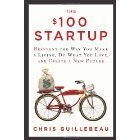
The
$100 Startup: Reinvent the Way You Make a Living, Do What You...
by Chris Guillebeau
List Price: $23.00
Price: $16.55

You Save: $6.45
(28%)


See even
more similar items
Find Great
Deals on Millions of Items Storewide
› Books
› Movies
& TV
› Kindle
› Kindle
Paperwhite
› Kindle
Fire HD
› Amazon
Instant Video
› Music
› MP3
Downloads
›
Electronics
› Video
Games
› Cell
Phones & Accessories
›
Computers & Software
› Sports
& Outdoors
›
Automotive
›
Industrial & Scientific
› Prime
› Toys
& Games
› Baby
›
Clothing
› Shoes
› Jewelry
› Watches
› Beauty
›
Magazines
› Kitchen
& Dining
› Office & School Supplies
› Home
Improvement
› Grocery
› Patio,
Lawn & Garden
› Health
& Personal Care
› Gourmet
Food
› Gift
Cards

Connect
with us




Published on June 13, 2013 14:09
June 12, 2013
DENNIS WALSH FINDS HIS IDEAL AUDIENCE
Published on June 12, 2013 00:00


